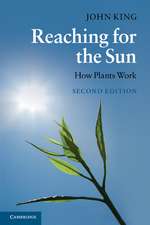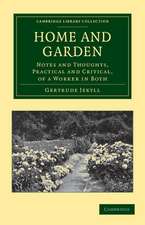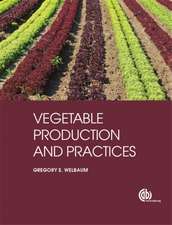Wood - The Internal Optimization of Trees: Springer Series in Wood Science
Autor Claus Mattheck, Hans Kubleren Limba Engleză Paperback – 30 ian 1997
Din seria Springer Series in Wood Science
- 18%
 Preț: 1543.84 lei
Preț: 1543.84 lei - 23%
 Preț: 2062.76 lei
Preț: 2062.76 lei - 18%
 Preț: 1824.32 lei
Preț: 1824.32 lei - 24%
 Preț: 817.72 lei
Preț: 817.72 lei - 18%
 Preț: 1225.16 lei
Preț: 1225.16 lei - 18%
 Preț: 3288.92 lei
Preț: 3288.92 lei - 18%
 Preț: 948.29 lei
Preț: 948.29 lei - 18%
 Preț: 1222.31 lei
Preț: 1222.31 lei - 18%
 Preț: 2093.60 lei
Preț: 2093.60 lei - 18%
 Preț: 946.87 lei
Preț: 946.87 lei - 15%
 Preț: 643.34 lei
Preț: 643.34 lei - 18%
 Preț: 1122.87 lei
Preț: 1122.87 lei - 18%
 Preț: 1020.30 lei
Preț: 1020.30 lei - 24%
 Preț: 836.42 lei
Preț: 836.42 lei - 20%
 Preț: 569.49 lei
Preț: 569.49 lei - 15%
 Preț: 638.89 lei
Preț: 638.89 lei - 15%
 Preț: 636.30 lei
Preț: 636.30 lei - 15%
 Preț: 635.31 lei
Preț: 635.31 lei - 15%
 Preț: 646.43 lei
Preț: 646.43 lei - 18%
 Preț: 1004.67 lei
Preț: 1004.67 lei - 18%
 Preț: 894.03 lei
Preț: 894.03 lei - 15%
 Preț: 658.70 lei
Preț: 658.70 lei - 15%
 Preț: 641.53 lei
Preț: 641.53 lei - 18%
 Preț: 950.84 lei
Preț: 950.84 lei - 18%
 Preț: 783.35 lei
Preț: 783.35 lei - 15%
 Preț: 645.79 lei
Preț: 645.79 lei - 24%
 Preț: 880.81 lei
Preț: 880.81 lei -
 Preț: 388.13 lei
Preț: 388.13 lei - 18%
 Preț: 780.82 lei
Preț: 780.82 lei - 15%
 Preț: 529.13 lei
Preț: 529.13 lei
Preț: 878.05 lei
Preț vechi: 1070.79 lei
-18% Nou
Puncte Express: 1317
Preț estimativ în valută:
168.02€ • 179.67$ • 140.09£
168.02€ • 179.67$ • 140.09£
Carte tipărită la comandă
Livrare economică 18 aprilie-02 mai
Preluare comenzi: 021 569.72.76
Specificații
ISBN-13: 9783540620198
ISBN-10: 3540620192
Pagini: 144
Ilustrații: XII, 131 p.
Dimensiuni: 155 x 235 x 8 mm
Greutate: 0.23 kg
Ediția:1997
Editura: Springer Berlin, Heidelberg
Colecția Springer
Seria Springer Series in Wood Science
Locul publicării:Berlin, Heidelberg, Germany
ISBN-10: 3540620192
Pagini: 144
Ilustrații: XII, 131 p.
Dimensiuni: 155 x 235 x 8 mm
Greutate: 0.23 kg
Ediția:1997
Editura: Springer Berlin, Heidelberg
Colecția Springer
Seria Springer Series in Wood Science
Locul publicării:Berlin, Heidelberg, Germany
Public țintă
ResearchCuprins
1 Introduction.- 2 Mechanical Fundamentals.- 2.1 External Loading and Internal Stresses.- 2.2 Thermal Expansion and Thermal Stresses.- 2.3 The Finite-Element Method (FEM).- 2.4 Notches and Notch Stresses — The Component Killers.- 2.5 Crack Propagation.- 2.6 The Main Mechanical Aspects.- 3 The Mechanical Self-Optimization of Trees — Five Theorems.- 3.1 The Five Theorems.- 4 The Principle of Minimum Lever Arms.- 4.1 Negative Gravitropism.- 4.2 The Flexibility Strategy.- 5 The Axiom of Uniform Stress.- 5.1 The Undisturbed Design.- 5.2 Repair Growth.- 5.3 Computer-Aided Optimization — CAO.- 6 Parallel Fiber and Force Flow Arrangement.- 6.1 The Principal Stress Trajectories are Shear-Free Lines.- 6.2 Computer-Aided Internal Optimization — CAIO.- 6.3 Spindle Shapes — Advantages and Problems.- 6.4 Fiber Deviations.- 6.4.1 Mechanically Controlled Spiral Grain.- 6.4.2 Genetically Programmed Spiral Grain.- 6.4.3 The Risks of Spiral Grain.- 7 Tree Rings and Force Flow.- 7.1 Longitudinal Tree Ring Arrangement.- 7.2 Tangential Tree Ring Arrangement.- 8 Growth Stresses.- 8.1 Qualitative Description.- 8.2 Longitudinal Stresses.- 8.3 Lateral Stresses.- 8.4 Selected Techniques for Measuring Growth Stresses.- 8.4.1 Visual Evaluation.- 8.4.2 Measurement of Growth Stresses with an Increment Borer.- 8.4.3 Growth Stress Measurement with Prismatic Samples.- 8.4.4 Growth Stress Measurement Between Two Pocket Holes.- 8.4.5 Single-Hole Growth Stress Measurement.- 8.4.6 Tangential Growth Stress Measurement on Radial Saw Cuts.- 9 Stress-Controlled Strength Distribution.- 9.1 The Wood-Concrete Analogy.- 9.2 Radial Transverse Strengths and Hazard Beams.- 9.3 Tangential Transverse Strengths in Leaning Trees.- 9.4 Strengths in the Residual Walls of Hollow Trees.- 10 Cracks.- 10.1 FrostCracks.- 10.2 Shear Cracks.- 10.3 Enclosed Bark.- 10.4 Hazard Beams.- 10.5 Ring Shakes.- 10.6 Grown Cracks on the Upper Sides of Branch Joints.- 10.7 T-Cracks.- 10.8 Drought Cracks.- 11 Final Remarks — Review and Outlook.- Reference.











